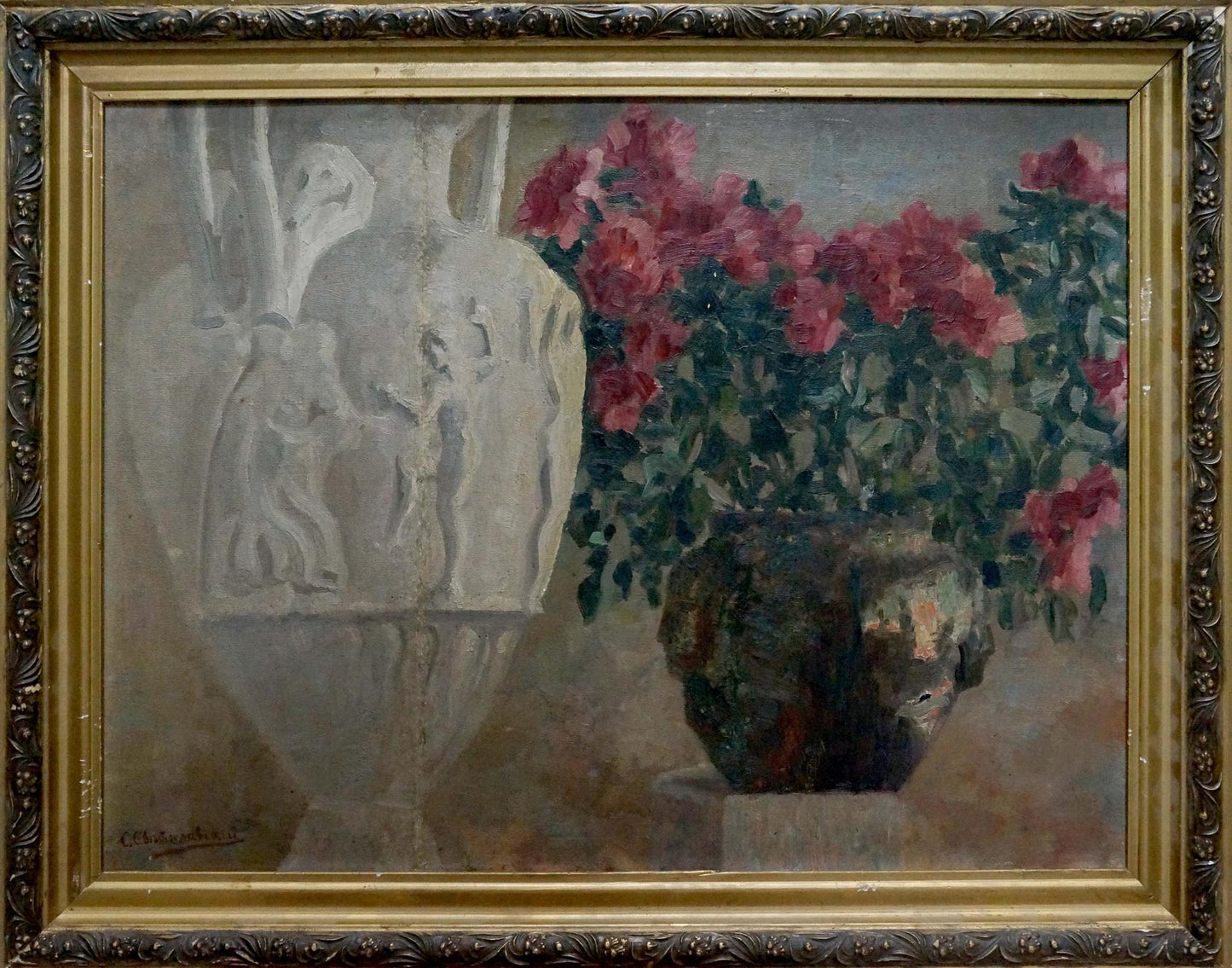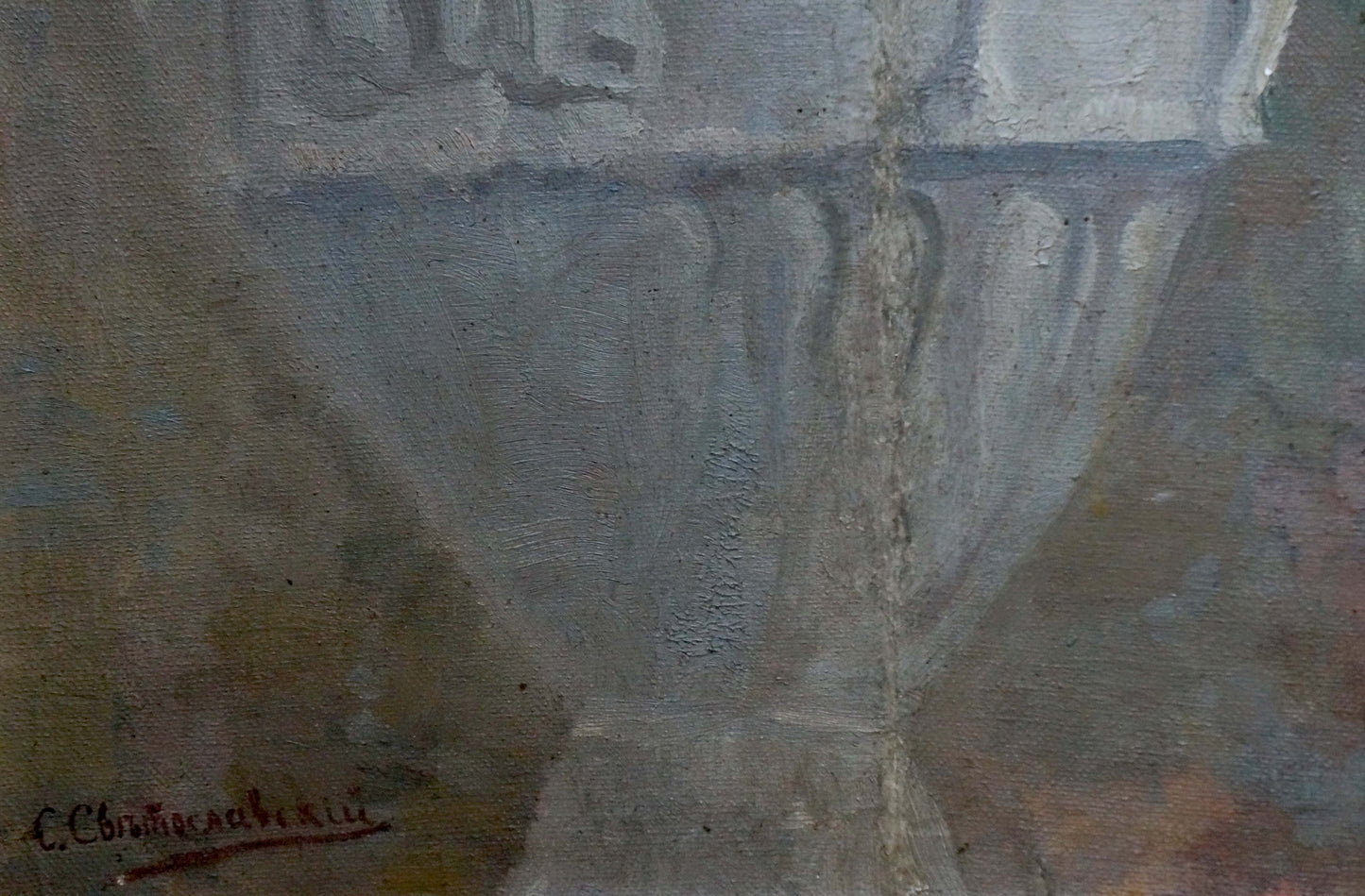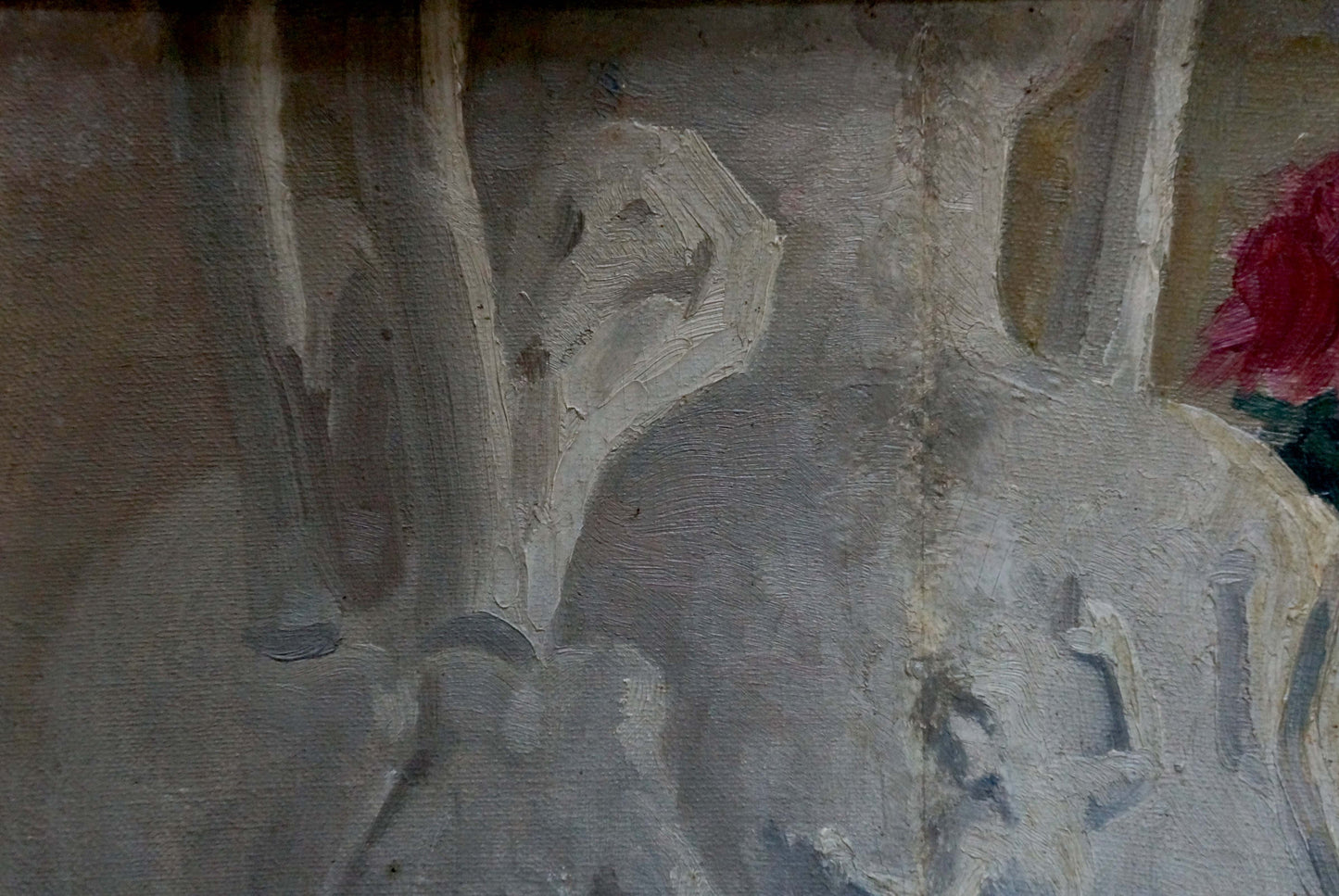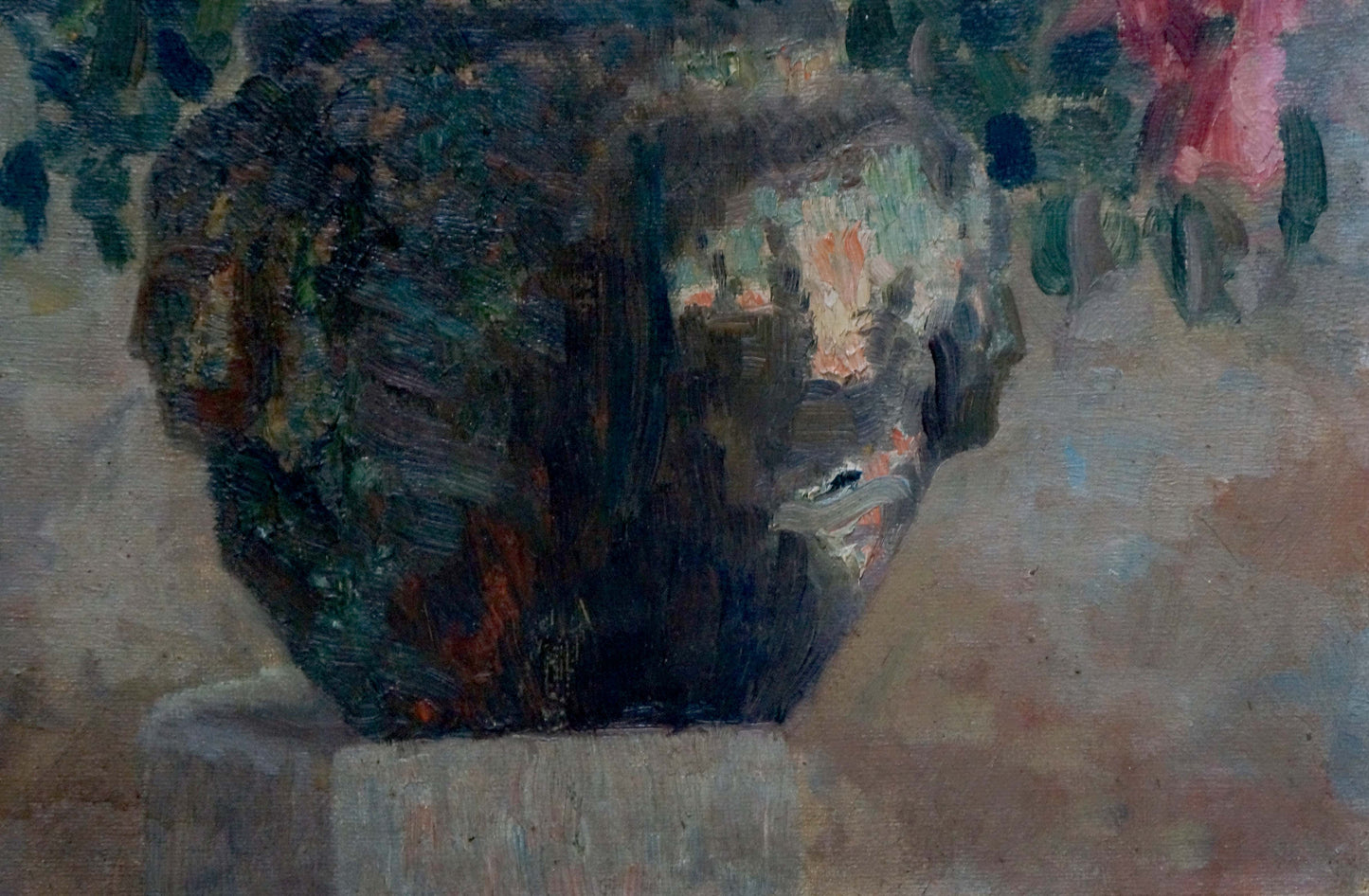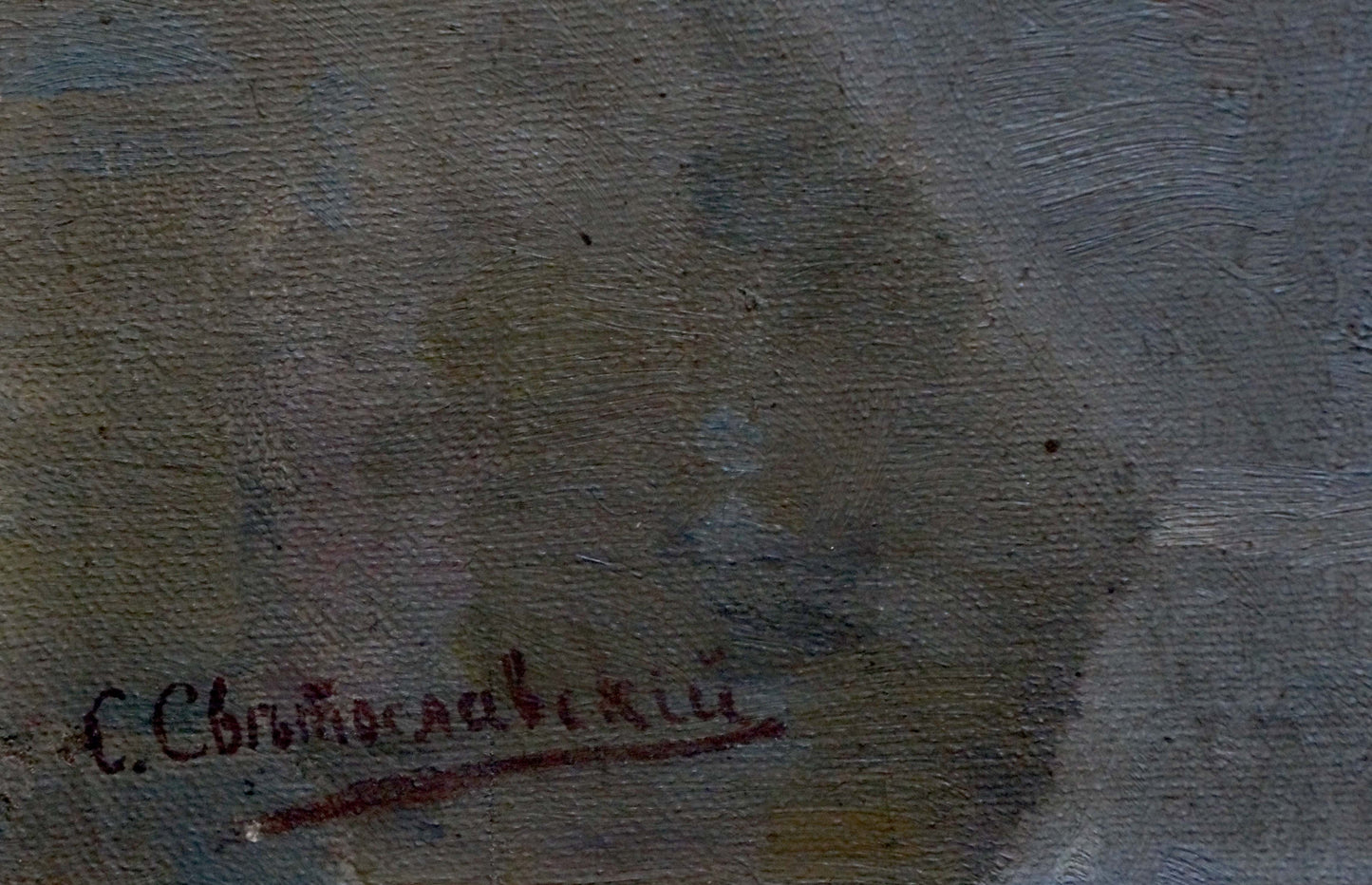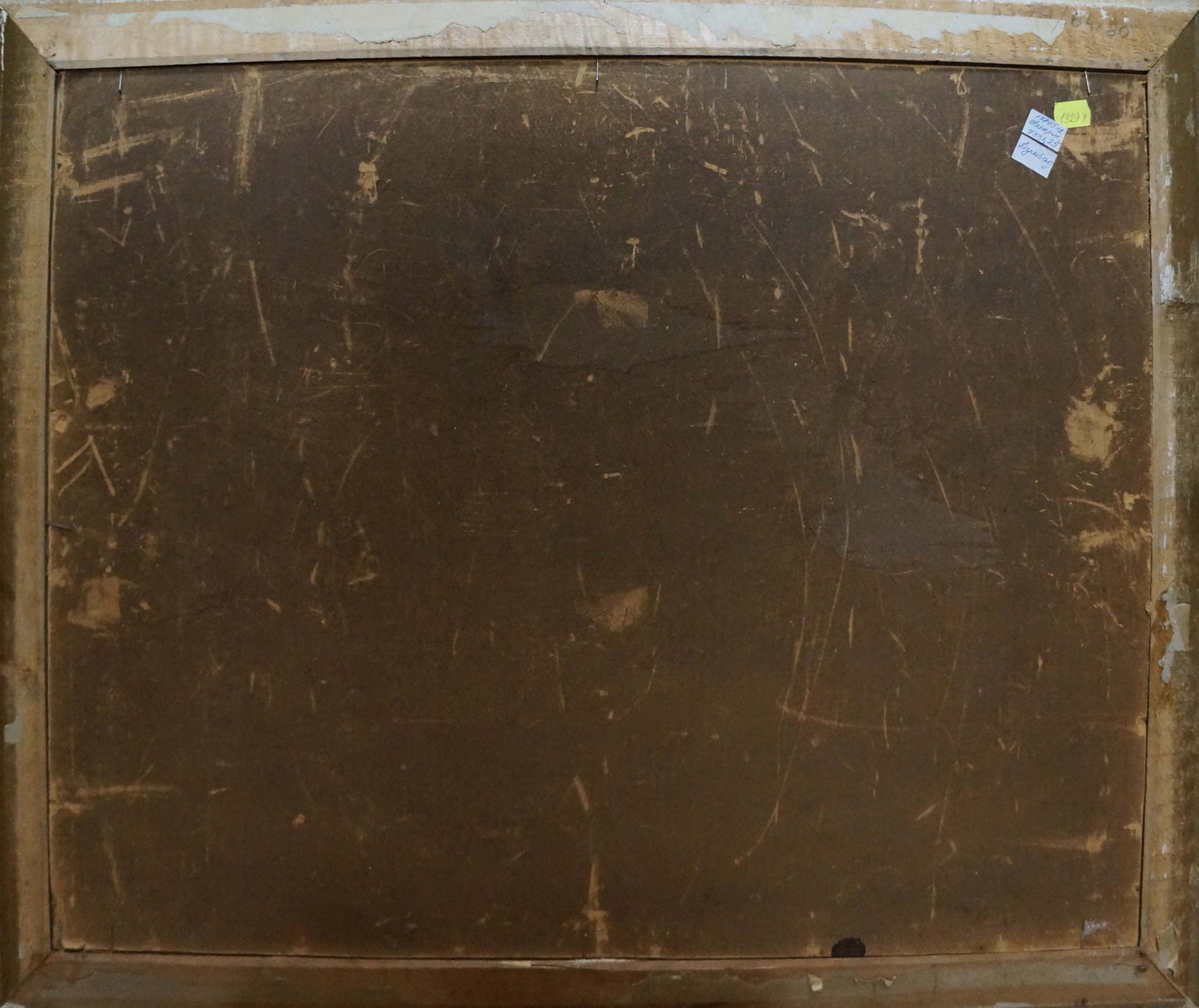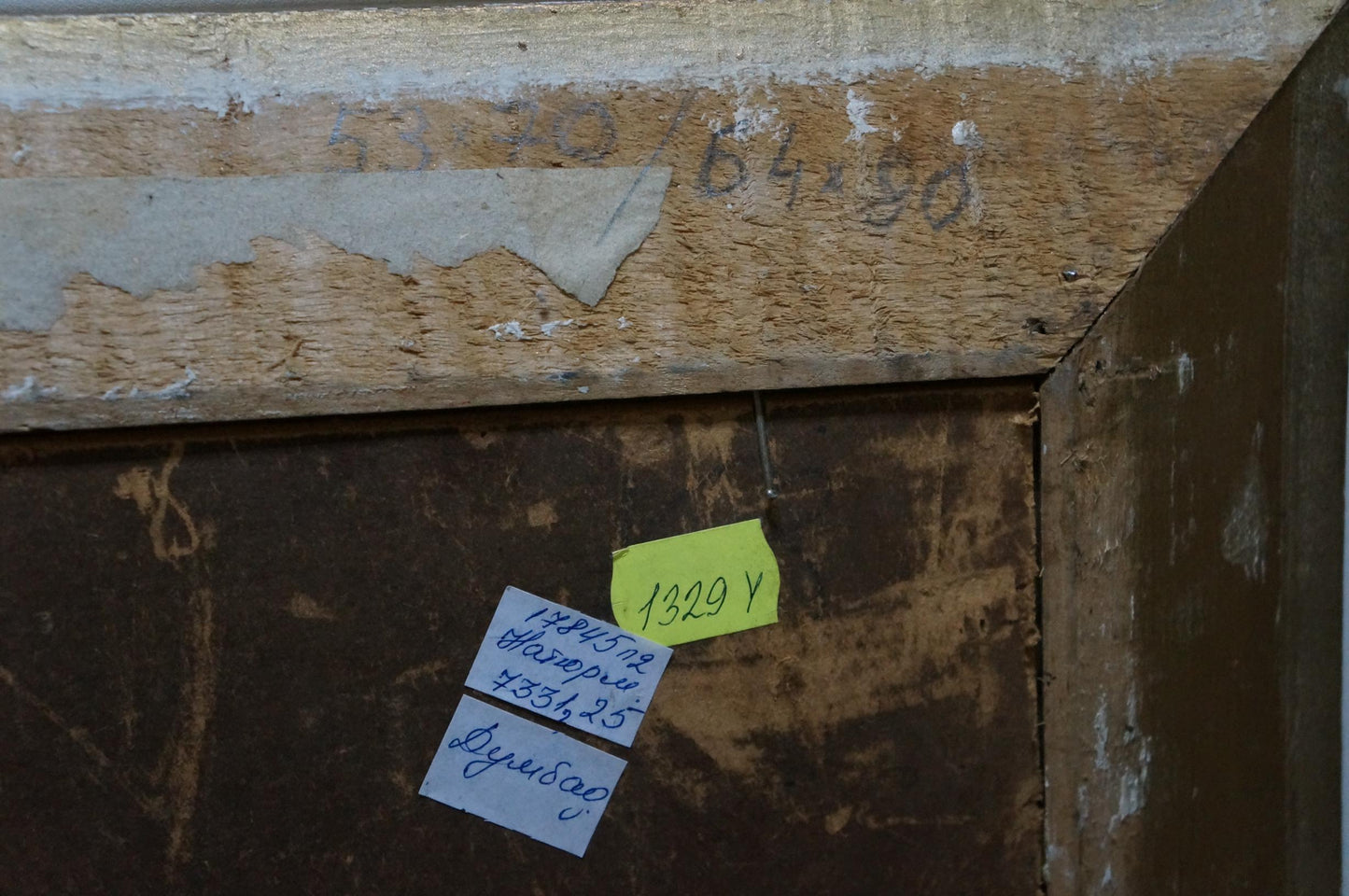1
/
of
8
Oil painting Flowers Sergei Ivanovich Svetoslavsky
Oil painting Flowers Sergei Ivanovich Svetoslavsky
SKU:Vern1624
Regular price
$24,000.00 USD
Regular price
Sale price
$24,000.00 USD
Taxes included.
№Vern 1624
*** ABOUT THIS PAINTING ***
* TITLE: "Flowers"
* ARTISTS: Sergei Ivanovich Svetoslavsky
* SIZE: 53x70 cm/'20.86x27.55 inches', frame size: 64x80 cm/'25.19x31.49 inches'
* MEDIUM: oil, cardboard
* HAND PAINTED: Original painting from our collection
* CONDITION: we tried to convey the maximum information with the help of photos about this product
About the artist: Sergei Ivanovich Svetoslavsky (Svitoslavsky) was born and lived most of his life in our city (October 6, 1857 - September 19, 1931). For several years (1870–1883, 1890–1894) he was engaged in his creative activities in Moscow, where he was educated at the Moscow School of Painting, Sculpture and Architecture. His teachers were Alexei Savrasov, Vasily Perov, Evgraf Sorokin, Illarion Pryanishnikov, Vasily Polenov. This and other stories about famous Kievites can be heard on our tours of Kiev.
In 1891-1900, the artist was a member of the Association of Wanderers, a popular community in those years showing paintings to the public.
In 1900, Svetoslavsky was awarded the bronze medal of the World Exhibition in Paris for the painting “Yard”.
In 1905-1907, he already organized an art studio in Kiev, where former students of the Kiev Art College, expelled for participating in student unrest, continued their education.
He was the creator of the metal painted panels that once adorned the interests of the Chocolate House.
During this period, the master discovers a new painting. He begins to work in the field of satirical graphics. His cartoons were published by the Kiev magazine "Hornet" (since 1906).
In 1904-1917. Sergey Ivanovich participated in several charity exhibitions. Among them were exhibitions held by the Kiev department of guardianship of the deaf-mute, an exhibition to help the Polish population affected during the hostilities during the First World War, and others.
However, in the life of a landscape painter, a successful cartoonist, a tragedy occurred. In the early 1920s (he was already over 60), his eye disease worsened, and he could no longer write. Until the end of his life, he almost did not work as a painter. In the fall of 1931, at the age of 73, he died in Kiev.
Kiev has become an inexhaustible source of inspiration for Svetoslavsky. In quiet Kurenevka, where life flowed measuredly, life was more like a peasant than a city one - they went for water with buckets to the well, in the yards they kept cows, horses and other livestock - there was a small estate of his parents. Street Kirillovskaya, 96. Svetoslavsky had no family, he lived with his old mother. This was his world. At Kurenevka, Svetoslavsky wrote his Kiev, which was not touched by urbanization - wilderness streets with squat houses, tree-lined slopes near the Kirillovskaya Church, the clutter of local fairs, the mysterious thickets of an abandoned park “Throw sadness”. “In the park, I met only the old artist. He sat under a large linen umbrella and wrote sketches. The artist was already looking so angrily at me from afar that I never dared to approach him, ”recalls K. Paustovsky in his book“ Far Years ”. And although he does not give the name of the artist, one can understand who it is: this was the way the camera lens was fixed by Svetoslavsky in those “distant years” - a tall man with a big beard sits under an umbrella near an unfinished study. His appearance, reminiscent of contemporaries of Darwin or Tolstoy, attracted attention. V. Vasnetsov saw in him the prophet Moses and portrayed the artist in this image on one of the pylons of Vladimir Cathedral.
The hostile attitude of outside observers also finds its explanation. Svetoslavsky spoke with humor on the pages of a Kiev newspaper about a curious incident that occurred in 1903. As soon as he adjusted the canvas to the sketchbook, he began to write boats on the Dnieper, when he was taken to the department by a too zealous city officer. The artist’s personality was quickly established, he was so famous in the city, and the subject himself didn’t raise objections from the head - the artist wrote everything that he saw beyond the threshold of his workshop.
Today, Svetoslavsky’s works are kept in the Kiev Museum of Ukrainian Art, the National Historical Museum of Ukraine, the Tretyakov Gallery in Moscow and private collections. The artist himself was buried in Kiev, at the Lukyanovsky cemetery.
*** ABOUT THIS PAINTING ***
* TITLE: "Flowers"
* ARTISTS: Sergei Ivanovich Svetoslavsky
* SIZE: 53x70 cm/'20.86x27.55 inches', frame size: 64x80 cm/'25.19x31.49 inches'
* MEDIUM: oil, cardboard
* HAND PAINTED: Original painting from our collection
* CONDITION: we tried to convey the maximum information with the help of photos about this product
About the artist: Sergei Ivanovich Svetoslavsky (Svitoslavsky) was born and lived most of his life in our city (October 6, 1857 - September 19, 1931). For several years (1870–1883, 1890–1894) he was engaged in his creative activities in Moscow, where he was educated at the Moscow School of Painting, Sculpture and Architecture. His teachers were Alexei Savrasov, Vasily Perov, Evgraf Sorokin, Illarion Pryanishnikov, Vasily Polenov. This and other stories about famous Kievites can be heard on our tours of Kiev.
In 1891-1900, the artist was a member of the Association of Wanderers, a popular community in those years showing paintings to the public.
In 1900, Svetoslavsky was awarded the bronze medal of the World Exhibition in Paris for the painting “Yard”.
In 1905-1907, he already organized an art studio in Kiev, where former students of the Kiev Art College, expelled for participating in student unrest, continued their education.
He was the creator of the metal painted panels that once adorned the interests of the Chocolate House.
During this period, the master discovers a new painting. He begins to work in the field of satirical graphics. His cartoons were published by the Kiev magazine "Hornet" (since 1906).
In 1904-1917. Sergey Ivanovich participated in several charity exhibitions. Among them were exhibitions held by the Kiev department of guardianship of the deaf-mute, an exhibition to help the Polish population affected during the hostilities during the First World War, and others.
However, in the life of a landscape painter, a successful cartoonist, a tragedy occurred. In the early 1920s (he was already over 60), his eye disease worsened, and he could no longer write. Until the end of his life, he almost did not work as a painter. In the fall of 1931, at the age of 73, he died in Kiev.
Kiev has become an inexhaustible source of inspiration for Svetoslavsky. In quiet Kurenevka, where life flowed measuredly, life was more like a peasant than a city one - they went for water with buckets to the well, in the yards they kept cows, horses and other livestock - there was a small estate of his parents. Street Kirillovskaya, 96. Svetoslavsky had no family, he lived with his old mother. This was his world. At Kurenevka, Svetoslavsky wrote his Kiev, which was not touched by urbanization - wilderness streets with squat houses, tree-lined slopes near the Kirillovskaya Church, the clutter of local fairs, the mysterious thickets of an abandoned park “Throw sadness”. “In the park, I met only the old artist. He sat under a large linen umbrella and wrote sketches. The artist was already looking so angrily at me from afar that I never dared to approach him, ”recalls K. Paustovsky in his book“ Far Years ”. And although he does not give the name of the artist, one can understand who it is: this was the way the camera lens was fixed by Svetoslavsky in those “distant years” - a tall man with a big beard sits under an umbrella near an unfinished study. His appearance, reminiscent of contemporaries of Darwin or Tolstoy, attracted attention. V. Vasnetsov saw in him the prophet Moses and portrayed the artist in this image on one of the pylons of Vladimir Cathedral.
The hostile attitude of outside observers also finds its explanation. Svetoslavsky spoke with humor on the pages of a Kiev newspaper about a curious incident that occurred in 1903. As soon as he adjusted the canvas to the sketchbook, he began to write boats on the Dnieper, when he was taken to the department by a too zealous city officer. The artist’s personality was quickly established, he was so famous in the city, and the subject himself didn’t raise objections from the head - the artist wrote everything that he saw beyond the threshold of his workshop.
Today, Svetoslavsky’s works are kept in the Kiev Museum of Ukrainian Art, the National Historical Museum of Ukraine, the Tretyakov Gallery in Moscow and private collections. The artist himself was buried in Kiev, at the Lukyanovsky cemetery.
Couldn't load pickup availability
